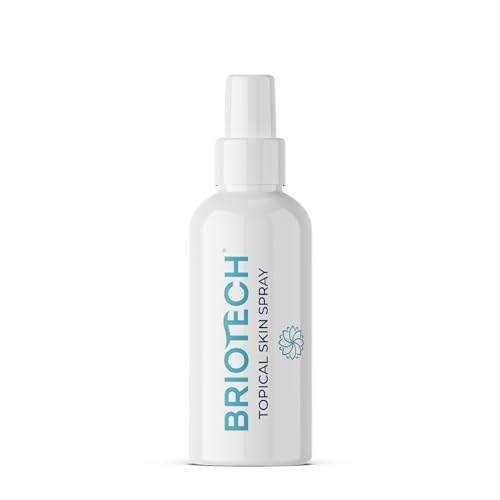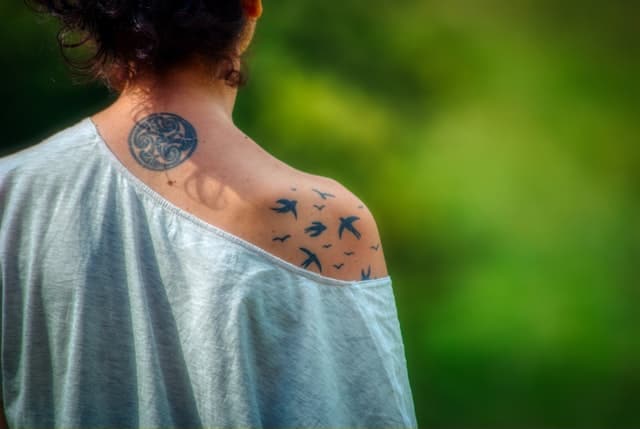Finally. After researching artists and styles and deciding if it was really for you, you’ve got your first tattoo. But what do you do for aftercare? How do you take care of that precious tattoo while you’re at work? When can your life get back to “normal” after your body modification?
Your head is swimming at the number of rules, the dos and don’ts, the endless options regarding how to and what not to do. So many factors go into the next phase of rocking that new ink. Things you probably never thought about when you were initially making the decision as to the pros and cons of becoming a member of the tattoo community.
But that’s OK. Don’t make tattoo aftercare place your ultimate decision in the “regrets” column. We will break things down into bite-sized, easy-to-digest pieces that will make caring for and protecting your new tattoo like second nature for you because, you know what they say: once you start getting tattoos, you can’t stop!
Even though you did a ton of research into who was the right artist for your tattoo needs, you probably didn’t realize when you got your tattoo, you actually had a minor medical procedure. Because the needles penetrated your skin to deliver the ink, your skin is much more subjective to infection.
With that in mind, tattoo aftercare becomes even more important. Not only do you want to ensure that your tattoo looks just as amazing 30 years from now as the day you took the plunge, but you also want to make sure that you don’t get a skin infection. Just like you would perform wound care for a medical procedure, you will want to make sure you’re caring for your tattoo in the same way.
There are different ways to care for your tattoo during the week that follows its initial application. It may be a difficult decision, but we will hear from an industry expert who will help simplify the choice.
Let’s meet our expert
Monica Snyder has been a tattoo artist in the Dallas area for several years. When asked about today’s topic, Snyder says, “you should look at your new tattoo in the same way you would look at a burn and base your aftercare on that. Every artist has their own opinion on tattoo aftercare.”
She continued with “Your artist should, however, be willing to put their views aside to ensure that the aftercare they send you home with is the right one for you. Make sure that your artist knows if you have skin allergies. That’s a huge factor in determining what’s best for you.”
Different methods of tattoo aftercare
The first week of aftercare is critical in making sure your tattoo lives up to your expectations of staying bright and vibrant for years to come. Snyder says, “why would you waste your time and money and put yourself through the pain that comes with getting a tattoo if you didn’t plan to care for it?” The ways to do this are vast.
The suggestion to use one method over another will vary from artist to artist. Knowing your options is the best way to choose an aftercare method that will work best for your lifestyle. We will cover the two most commonly used methods of aftercare for your new tattoo.
Dry-healing
With this method, you throw caution to the wind and let the tattoo heal on its own. Basically, you don’t add moisturizer or cover your tattoo during its initial phase of healing. Let’s look at the main things you need to remember when it comes to dry-healing.
- No need to moisturize – allows your skin to heal naturally
- Leaves skin more open to infection
- You still need to cleanse tattoo 2 – 3 times per day with antibacterial soap
- Wear breathable clothing over the tattoo to make sure it stays clear of direct sunlight
- DO NOT give in to the temptation of picking at your tattoo as it scabs over
Snyder does not personally recommend this method, though she sees its benefits. She says, “dry-healing might be a good option for my clients who have severe allergies.
This is a natural method of healing, and for some, it’s the right choice for their tattoo aftercare.” Tattoos are more likely to develop thick scabs when employing dry-healing, and they are more apt to look unsightly during the first few phases of healing.
Protective Film Covering
There are many options of brands when it comes to protective film coverings for your tattoo. Luckily, this isn’t something you, personally, will have to concern yourself with. That choice falls to your tattoo artist who will provide you with the film.
The benefits of this method make this option of aftercare seem like a “no brainer” because it takes away your worries during the most crucial part of the healing process: the first week after getting your tattoo. Let’s look at the main points to keep in mind when using a protective film covering during the initial stage of healing.
- Do not use if you are allergic to latex or adhesive
- Works well to cover a large area
- No need to moisturize or cleanse the area daily
- Shower-safe
- Remove first covering after 24 hours, cleanse the area, replace with new covering that will last for 5 – 6 days
- Do not replace film after the suggested time period (5 -6 days after second application)
- No cost to you – artist provides
Snyder promotes the use of protective coverings for her clients, however, she understands this isn’t right for everyone. She says, “this is, in my opinion, the best option for most of my clients. If you’re allergic to latex, this isn’t going to work for you. If you have other skin allergies, it may not be the one for you either.
Overall, it’s a good choice. It protects the tattoo while allowing oxygen to flow through the breathable material. It keeps your tattoo from being exposed to sunlight and prevents rough clothing from rubbing against it.” Even Snyder, who doesn’t have any skin allergies, has experienced redness and irritation around the covered area once the film was removed. However, she notes, any irritation was, for the most part, painless, and it subsided within a few hours.








I’m returning to work with my new tattoo. What should I do?
There are a few things to keep in mind as you return to work that will help you to retain the integrity of your new tattoo. The main thing you need to remember is that you DO NOT want your tattoo exposed to sunlight if you can help it.
This is going to be more of an issue with the dry-healers. If you are opting to dry heal, then the best way to keep the sun away is by wearing clothes that will loosely cover your new artwork. If the clothes are too tight or too rough, then you are risking your tattoo being scratched and the area being irritated.
If you are opting to go with film covering, these factors aren’t as important because your tattoo is protected, more or less, by the film itself. However, loose-fitting clothing is still recommended as an additional protector against the sun’s harmful rays.
I’m past the initial week of aftercare for my tattoo. Now what?
Your tattoo is going to take months to properly heal. Snyder says, “think of your new tattoo. Regardless of the aftercare method you go with, some guidelines should be adhered to by everyone to ensure their tattoo looks amazing for a lifetime. For the next 30 days, it is recommended that you:
- Keep it out of the sun!
- Cover loosely with clothing
- Use sunscreen
- DO NOT submerge in water! This includes:
- bathtubs
- swimming pools/saunas
- natural bodies of water
- Avoid scratching area
- DO NOT pick at scabbed over area
- DO NOT use over-the-counter ointments
- Make sure to use an unscented moisturizer
While a widely researched subject that most don’t enter into lightly, not many realize just how much will go into the aftercare of a new tattoo. Yet, when you have an artist on your side who helps you to determine the aftercare method that is best for you, the rest will simply fall into place.
The basics to follow after that initial week are not difficult to understand or follow, and after making it to the other side of your first tattoo, you’ll be preparing to make that appointment for tattoo number two.

